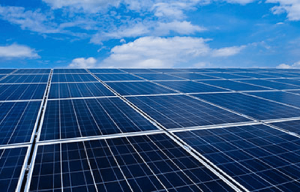The Measurement of Carbon Footprints
Carbon footprint can be measured via a greenhouse gas emissions assessment. Once a carbon footprint has been measured, strategies can be implemented to reduce the carbon footprint. Although free carbon footprint calculators can be accessed online, a sustainability consultant, with the expertise and background in carbon footprints and offsets can provide information about how a reduction in carbon footprint can be achieved via the use of solar technologies, such as a photovoltaic system.
Business Carbon Footprint Reduction
Reducing fossil fuel-based energy sources can be achieved via energy efficient technologies such as lighting upgrades and occupancy sensors in distribution centers/warehouse and building heating/cooling systems. The use of renewable energy such as solar power into a company’s energy mix is becoming more cost competitive due to innovations that have reduced the price of solar technology over the years. The United States Department of Energy (DOE) funds research and development to improve solar energy technologies. Click here for more information about DOE solar energy programs and initiatives.
 Personal Carbon Footprint Reduction
Personal Carbon Footprint Reduction
A small solar electric or photovoltaic (PV) system can be a reliable and pollution-free producer of electricity for your home or office. PV systems are becoming more affordable. The Department of Energy (DOE) website has additional information regarding the implementation of solar facilities for residential uses.
As detailed on the DOE’s website, the first thing to consider regarding solar electric systems is what portion of your current electricity needs you would like your PV system to meet. For example, if you wanted to meet a certain percentage of your electricity needs with your PV system, you could work with your PV provider to examine past electric bills and determine the size of the PV system needed to achieve that goal. Another option is to contact your utility company and request the total electricity usage, measured in kilowatt-hours (kWh), for your household or business over the past 12 months or consult your electric bills.
In addition to how much electricity you’d like to generate, the size of your system also depends on these factors:
-
- The available sunlight
- The system’s orientation and tilt
- The system’s efficiency at converting sunlight to electricity
- Other electricity sources, like utility, wind turbine, or fossil fuel generator.
PV systems are classified by their rated power output (the peak power they produce when exposed to solar radiation of 1000 watts per square meter at a module temperature of 25°C). Systems rated between 1 and 5 kilowatts are generally sufficient to meet most of the needs of home and small business owners.
Carbon Footprints and Life Cycle Assessments
A carbon footprint is a key component of a life cycle assessment (LCA). To optimize economies of scale and minimize costs, many organizations elect to conduct a full LCA – encompassing water, waste, and other natural resources and impacts – at the time they establish their carbon footprint. FirstCarbon Solutions encourages this practice for several reasons:
-
- Implementing carbon footprint, energy efficiency, and LCA measures concurrently is more cost-effective, as they share much of the same data.
- Performing an LCA of your entire manufacturing process lets you simultaneously evaluate multiple products, product lines, and processes.
- LCA data can be used to drive a wider range of business decisions to improve supply chain and product line sustainability and profitability.
Sustainability consultants, such as First Carbon Solutions, can conduct life cycle assessment services which go beyond assessing carbon footprint and GHG emissions to encompass water, waste, and a full spectrum of natural resources throughout your supply chain.
For more information about sustainability and carbon footprint reduction, request a




